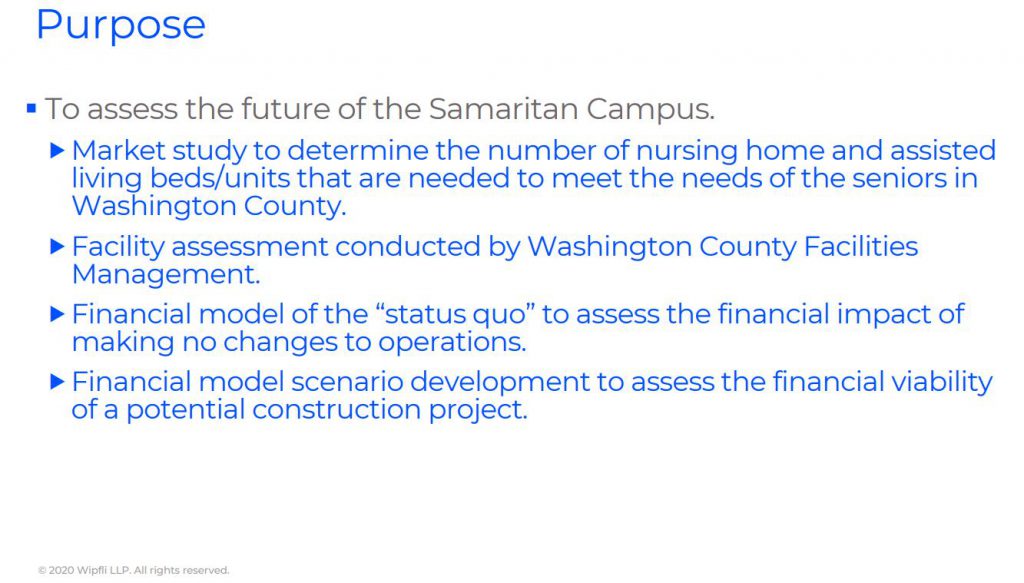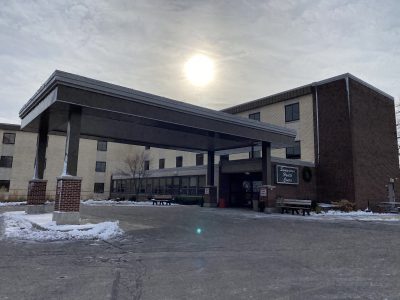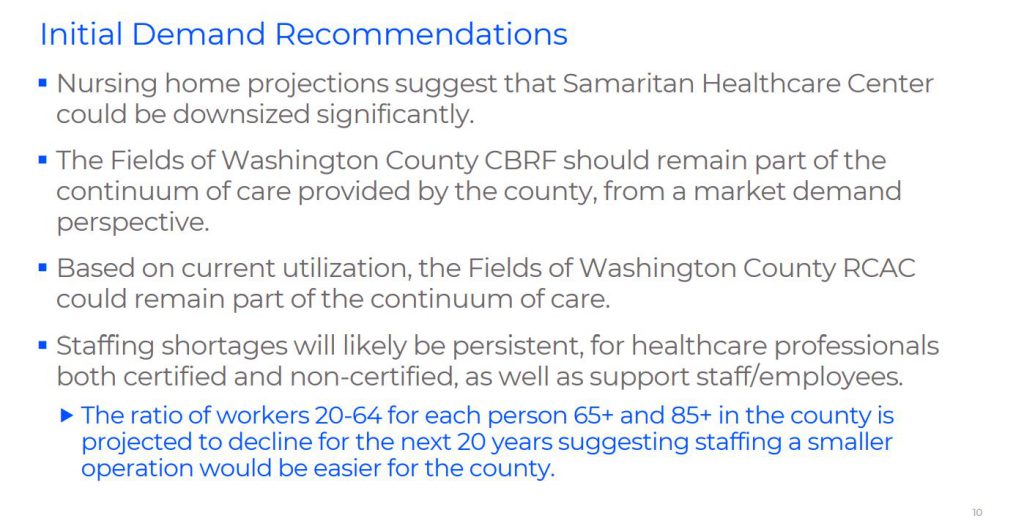December 15, 2020 – Washington Co., WI – Government officials in Washington County are exploring their options regarding the future of the Samaritan Campus, 531 E. Washington Street.

According to the county website: “Since first opening its’ doors in 1968 as a stand-alone nursing home, the campus has grown to include a wide array of service offerings. The Samaritan Health Center has 131 skilled and Medicare certified nursing home beds including 119 private rooms and four specially equipped rooms for bariatric clients.

The Fields of Washington County, also located on the campus, is comprised of a 24-unit Residential Care Apartment Complex and a 31-unit Community Based Residential Facility. We offer a continuum of care that is second to none. Whether it is assisted living, short term rehabilitation, sub-acute care, skilled nursing, bariatric, long term care or end of life care, it can all be found here on our campus.”
Deputy County Executive Matt Furno has been overseeing the Samaritan Home project.
“Phase 1 we are putting together a task force that will be between 7 – 9 participants in the community,” said Furno. “They will listen to the whole process on whether the county should remain in the long-term care business.”

Furno expects the task force to present its recommendation to the county board in early 2021.
Phase 2, the county is looking at if the facility is replaced, will it be downsized to 50 to 70 long-term care skilled nursing beds and 30 assisted living beds.
Phase 3, the county is exploring the feasibility of working with Cedar Campus.

“They have a lot of empty rooms and we’re looking at whether the state would allow two separate nursing homes, two separate licenses to run out of the same building,” he said. “This has not been the case in the past.”

Furno said a Community Based Residential Facility (CBRF) is also part of the discussion especially considering finances.
“Is a CBRF even possible and what is the financial breakdown,” Furno said. “Is it more costly or is it a cost savings for the county taxpayer. What makes it attractive is we would not have to go in for a bond of about $20 million to replace the facility.
“We would be leasing rooms, beds, and space for 20 to 25 years,” said Furno.
Cedar Community, according to Furno, was the only facility to come forward and speak with the county about the Samaritan Campus. “They’re the only ones that have the magnitude between 70 and 300 empty rooms,” he said. “All the other places in our county couldn’t touch that.”
The Fields is a separate category, it is separate living and it is a Residential Community Apartment Complex (RCAC).
“We will carve it out and ultimately raze the Samaritan Campus health center building built in 1967. We would get rid of it and The Fields is a newer building in good condition.
“That would continue to operate as is, we could change the licensing or we could sell it,” said Furno.

This past July 2020 the county hired WIPFLI to complete an initial financial analysis. WIPFLI also worked with Cedar Campus to see the feasibility of exploring the joint venture.
The staff at Samaritan Campus has been told about the ongoing discussion, the task force and the options.
“They’re scared and nervous,” according to Furno. “But they’ve been told for year. Eight years ago, the county board was in discussion on whether to close Samaritan so it is not a new topic. The new topic is the possibility of utilizing the beds at Cedar Campus but it is a long shot because it has not been done before.”
Furno said by the end of 2020 WIPFLI has to come up with a target of whether it is feasible and financially viable and how it would work that both entities, the County/ Samaritan and Cedar Community, would both be a winner.
“If this costs the taxpayers then it is not worth it to subsidize Cedar Community,” said Furno. “If on the other hand we can help Cedar Campus as a non for profit and we would be able to share services then serving the population would be more economical.”
There are about 170 people employed at the Samaritan Campus.
Below is some of the information contained in the 45-page report from WIPFLI.
Considerations
Construct a new nursing home and assisted living facility
Construction to nursing home for future ability to convert to assisted living
(CBRF)?
Number of beds for the nursing home and assisted living (CBRF)
Continue operating as status quo
Address facility assessment report findings
Focus on improving operations (financial results)
Exit the business
Sell nursing home and CBRF assisted living
Sell RCAC
County nursing homes and CBRFs
Family Care reimbursement (received in a CBRF) will be lower than the Medicaid rate received for a similar resident being served in a nursing home setting due to the Supplemental Payment Program.
In order for a CBRF that is on a property with a county nursing home (or part of a county nursing home (wing)) to receive payment from Family Care, the facility will need to go through the Home and Community-Based Services “heightened scrutiny” process. This process with the State is established, but is still evolving, and will be onerous; however, other county homes have successfully navigated through the process with the State/Family Care.
The County should begin researching the “heightened scrutiny” process.
Next Steps
Preparing a financial model to assess the financial viability of constructing a new 50-bed nursing home and a new 30-bed assisted living (CBRF)
Participate in discussions with Task Force
High-level preliminary architectural report to obtain likely cost of
construction








